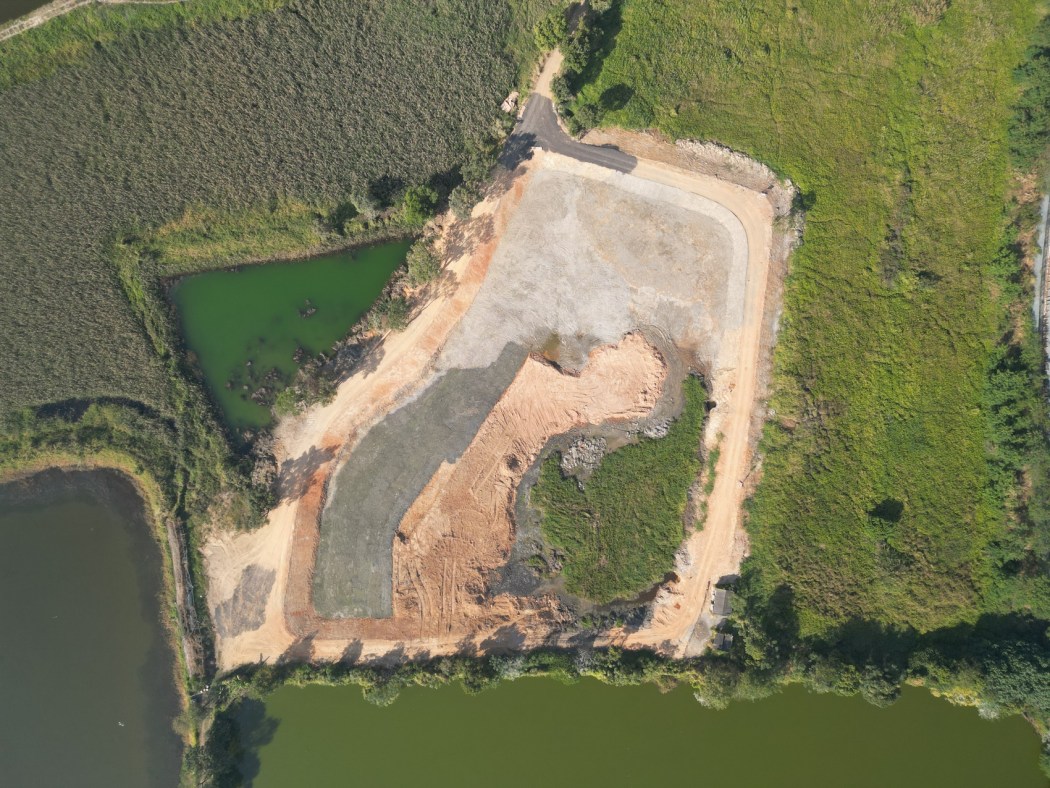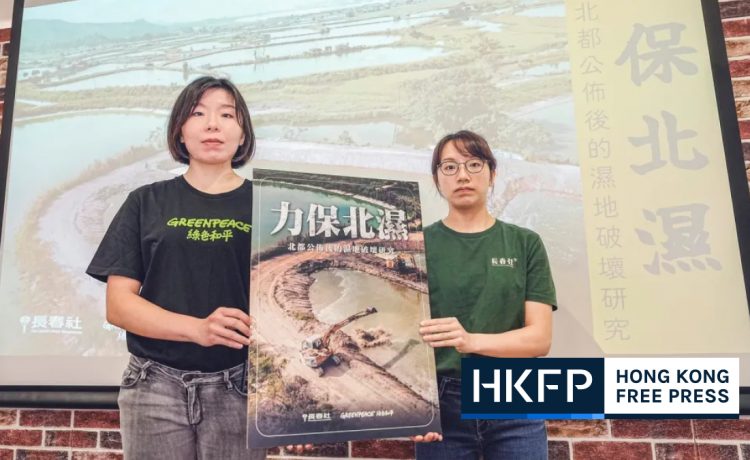Almost 80 hectares of protected wetland in Hong Kong’s New Territories has been destroyed since the government announced plans for a huge development in the region more than two years ago, two green groups say.

According to an analysis of satellite imagery and field studies conducted by The Conservancy Association and Greenpeace, 78.7 hectares of wetlands had been destroyed between July 2021 and December 2023.
The two groups at a press conference on Thursday said a further 587 hectares of wetland was at risk under current development plans.
The Northern Metropolis plan unveiled in July 2021 is intended to provide more than 900,000 homes when completed and generate around 650,000 jobs by integrating development projects in the northern New Territories near the border with mainland China.
The development plan has drawn criticism over its potential impact on wetland conservation and local villagers.

Of particular concern are the wetlands at Hoo Hok Wai, a 320-hectare conservation area where the area of damaged wetlands had doubled to 36.8 hectares over the course of the study, said Kristy Chow, a campaign officer at the Conservancy Association.
Additionally, a total of 27.2 hectares of the Sam Po Shue Wetlands, 12.2 hectares of the Nam Sang Wai wetlands, and 2.5 hectares of the Hong Kong Wetland Park Expansion Area were destroyed. In total, that accounts for just under five per cent of the area of wetland conservation parks surveyed, the association said.
The wetlands were mainly destroyed by large-scale flattening and excavation work, raising or widening embankments, and long-term placement of excavators and containers.
The association also spotted seven dump trucks entering wetland conservation zones in San Tin and said it suspected they were involved in unauthorised dumping.
Comprehensive policy lacking
Chan Hall-sion of Greenpeace said that while the government had issued notices and listed various areas as blackspots, it still lacked comprehensive policies for conservation and brownfield sites and could not rely on enforcement actions alone.

Chow also called attention to the government’s decision last November to decrease the size of the Sam Po Shue reserve from 520 hectares, as laid out in the 2021 Northern Metropolis Development Strategy, to 338 hectares, representing a 35 percent drop.
Chow described the government’s approach to development as “development first, conservation later,” citing the 13-year timeline for the development of the Sam Po Shue Wetland Conservation Park, in comparison with the allotted seven years for the San Tin Technopole – a massive Innovation and Technology (I&T) hub in the northern part of Hong Kong.
The two green groups urged the government to speed up the development of the Sam Po Shue conservation park such that its completion coincides with that of the San Tin Technopole, and to redraw the San Tin tech hub’s boundaries to avoid ecologically sensitive areas.
It urged authorities to step up efforts to protect wetland and allocate additional resources and manpower to carry out inspections and prosecutions where necessary, while enforcing strict standards and penalties.
Support HKFP | Policies & Ethics | Error/typo? | Contact Us | Newsletter | Transparency & Annual Report | Apps
Help safeguard press freedom & keep HKFP free for all readers by supporting our team









